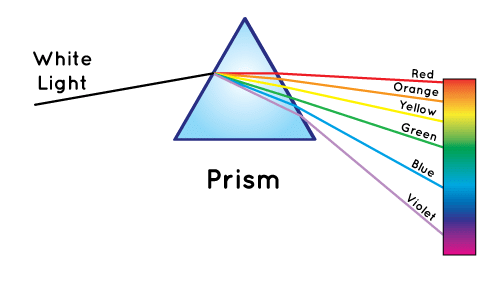Sunlight White Or Coloured?
Key Notes :
- Nature of Sunlight:
- Sunlight is composed of a spectrum of colors.
- When sunlight passes through a prism or water droplets in the atmosphere, it can be separated into its constituent colors.
- Visible Spectrum:
- The colors of the visible spectrum include red, orange, yellow, green, blue, indigo, and violet (ROYGBIV).
- These colors have different wavelengths, with red having the longest wavelength and violet having the shortest.
- White Light:
- When all the colors of the visible spectrum are combined in equal proportions, they form white light.
- This is why sunlight appears white to our eyes when it is not separated.
- Rainbows:
- Rainbows occur when sunlight is refracted (bent) and dispersed (spread out) by water droplets in the atmosphere.
- The different colors of a rainbow are a result of this dispersion.
- Sunsets and Sunrises:
- During sunrise and sunset, sunlight has to pass through more of Earth’s atmosphere, which scatters shorter wavelengths (blue and green) more than longer wavelengths (red and orange).
- This scattering effect is why we often see red and orange hues during these times.
- Colors of Objects:
- The colors of objects we see depend on the colors of light they absorb and reflect.
- A red apple appears red because it absorbs all colors except red, which it reflects.
- Artificial Light:
- Artificial light sources like incandescent bulbs emit a continuous spectrum of colors and appear white.
- Some artificial lights, like fluorescent or LED bulbs, may have a slight color tint due to the materials used in their construction.
- Color Perception:
- The human eye and brain perceive colors based on the wavelengths of light that reach the retina.
- Our perception of color is a complex interplay of light, cones in the eye, and neural processing.
- Importance of Sunlight:
- Sunlight is essential for life on Earth, as it provides energy for photosynthesis in plants and helps regulate the circadian rhythms in animals, including humans.
- It also plays a crucial role in vitamin D synthesis in our bodies.
- Conclusion:
- Sunlight is, in fact, composed of a variety of colors that can be separated using prisms or raindrops.
- However, when all these colors are combined in equal proportions, they appear white to our eyes.

Let’s practice!

